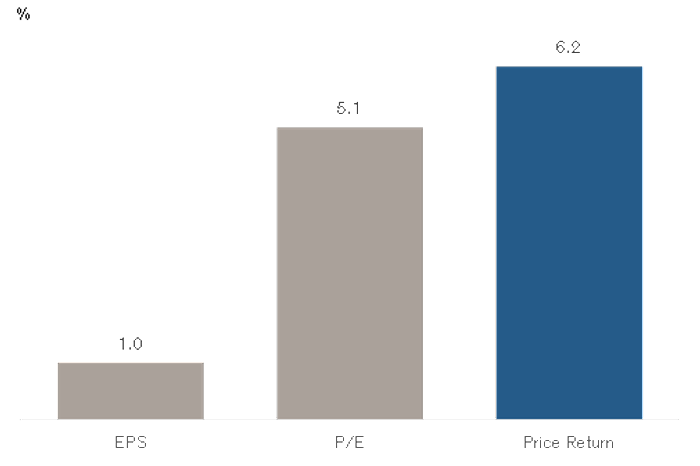The Dow Jones Industrial Average and S&P 500 index finished lower Wednesday, while the Nasdaq ended flat, as investors absorbed a huge batch of earnings from technology heavyweights.
How did stock indexes trade?
- The Dow Jones Industrial Average DJIA, -0.74% fell 266.19 points, or 0.7%, to end at 35,490.69, after setting 3 sessions in a row of records.
- The S&P 500 SPX, -0.51% shed 23.11 points, or 0.5%, finishing at 4,551.68.
- The Nasdaq Composite COMP, +0.00% gained less than a point, closing at 15,235.84.
On Tuesday, the Dow and S&P 500 both finished at records, while the Nasdaq Composite finished less than 1% below its record close from Sept. 7.
See: MarketWatch and Barron’s are gathering the most influential figures in crypto to help identify the opportunities and risks that lie ahead in digital assets today and Nov. 3. Register now.
What drove the market?
Stocks tumbled into the closing bell Wednesday, with only two days of trade left in October, after earlier notching a string of record closes in a robust week for third-quarter earnings.
While earnings have been “particularly strong,” posting a sixth straight quarter of double-digit beats, investor willingness to pay more for higher earnings has been a key to a rally that’s taken the S&P 500 up by more than 6% so far this month, said Jonathan Golub, chief U.S. equity strategist at Credit Suisse Securities, while pointing to the rise in stock multiples from 20 times earnings to 21.1 as being “the real driver of the market’s advance,” in a Wednesday note (see chart below).

“Although investors fear that higher interest rates, inflation, and energy prices are potential headwinds, these indicators reflect economic vibrancy, supporting higher stock prices,” Golub said.
Meanwhile, in a surprise move Wednesday, the Bank of Canada said it would abruptly end its bond buying program and warned of prolonged inflation through 2023, while also signaling it may hike interest rates sooner than expected, the second quarter of 2022.
Jim Vogel, fixed-income strategist at FHN Financial, attributed sharp moves lower in long dated U.S. Treasury yields on Wednesday, their biggest decline since July, to an “over reaction” by investors to the sudden change of tone by the Bank of Canada, adding that “most were looking to the ECB tomorrow for possible dovish central bank messaging, not north for actual hawks today,” in emailed commentary.
The worry for investors is that global central banks are in a “Catch-22” situation, said Jordan Stuart, client portfolio manager at Federated Hermes, with inflation threats at one end, but if a correction occurs, they also may be less willing to step in to backstop markets. “It may be that inflation is the bigger threat of the two,” he said, in a phone interview.
Lower U.S. Treasury yields helped to support technology stocks whose valuations are sensitive to bond yields, while good earnings reports from Google and Microsoft late Tuesday also helped the Nasdaq to eke out a gain Wednesday.
Microsoft Corp. MSFT reporting quarterly earnings that shot over $20 billion for the first time, late Tuesday. Shares rose 4.2% to a record close of $323.17, according to Dow Jones Market Data. Google parent Alphabet Inc. GOOGL reported earnings that topped estimates amid resilient advertising sales. Its shares rose 5%.
Read:Apple’s ‘ad-mageddon’ is affecting Snap, Facebook, Google and Twitter differently
Several other global indicators also look favorable for U.S. stocks, including excess global liquidity and retreating global shipping rates from highs set in early October, which could indicate the worst of supply-chain bottlenecks could be behind us, said Raheel Siddiqui, portfolio and quantitative strategist in Neuberger Berman’s global research department.
“We are in a Goldilocks range, not just for tomorrow, but likely in the next five months,” Siddiqui said, in a phone interview.
Data showed U.S. durable goods orders fell 0.4% in October, compared with expectations for a 1% decline. “Core” orders rose by 0.8%. Separately, the government said the trade deficit widened in September.
“The weakness in headline durable goods orders last month was driven by another fall in transport orders, which mostly reflects worsening supply problems in the auto market,” said Michael Pearce, senior U.S. economist at Capital Economics. “The strong increase in underlying orders and shipments suggests that demand remains solid.”
See: Why it’s wrong to compare today’s inflation surge to 1970s-style ‘stagflation’
Elsewhere, Sino-U.S. tensions were in focus after the Federal Communications Commission gave China Telecom 728, -0.73% 60 days to leave the U.S. market. Regulators cited a potential national security threat from the company, such as the disruption of U.S. communications, amid rising tensions between the countries.
Which companies were in focus?
- Boeing BA shares fell 1.5%, after the aerospace and defense company reporting a big loss and revenue misses amid weakness in the commercial airplanes and defense, space and security businesses, while free cash flow was a lot less negative than projected.
- McDonald’s MCD shares rose 2.7% after the fast-food giant reported third-quarter earnings and sales that beat expectations.
- Shares of Coca-Cola Co. KO rose 1.9%, after the beverage giant reported third-quarter profit and revenue that topped expectations, with all geographic regions seeing revenue and unit case volume growth. It also raised its full-year earnings growth view.
- General Motors Co. GM shares fell 5.4%, despite the auto maker blowing past profit estimates for the third quarter and offered above-consensus guidance for the full year, offsetting a revenue miss.
- Shares of Robinhood Markets Inc. HOOD, -10.44% fell 10.4% Wednesday, after the online trading platform reported a wider quarterly loss and lower-than-expected sales amid weak crypto-related revenue.
- Shares of Texas Instruments Inc. TXN, -5.02% slumped 5%, after the chip maker’s third-quarter results met Wall Street forecasts. It also noted “hot spots” of components shortages.
- Visa Inc. V, -6.92% shares fell 6.9% after the credit-card company topped earnings expectations but disappointed some over its revenue outlook.
What did other markets perform?
- The yield on the 10-year Treasury note TMUBMUSD10Y, 1.549% plunged 8 basis points to 1.528%. Yields and debt prices move in opposite directions.
- The ICE U.S. Dollar Index DXY, -0.08%, a measure of the currency against a basket of six major rivals, was off 0.1%.
- Oil futures pulled back from multiyear highs, with the U.S. benchmark CL00, -3.02% ending down 2.4% to settle at $82.66 a barrel. Gold futures GC00, +0.29% settled 0.3% lower at $1,798.80 an ounce.
- In European equities, the Stoxx Europe 600 SXXP, -0.36% fell 0.4% and London’s FTSE 100 UKX, -0.33% shed 0.3%.
- The Shanghai Composite SHCOMP, -0.98% fell 1%, while the Hang Seng Index HSI, -1.57% dropped 1.6% in Hong Kong, while Japan’s Nikkei 225 NIK, -0.03% saw a marginal decline.
Barbara Kollmeyer contributed reporting




